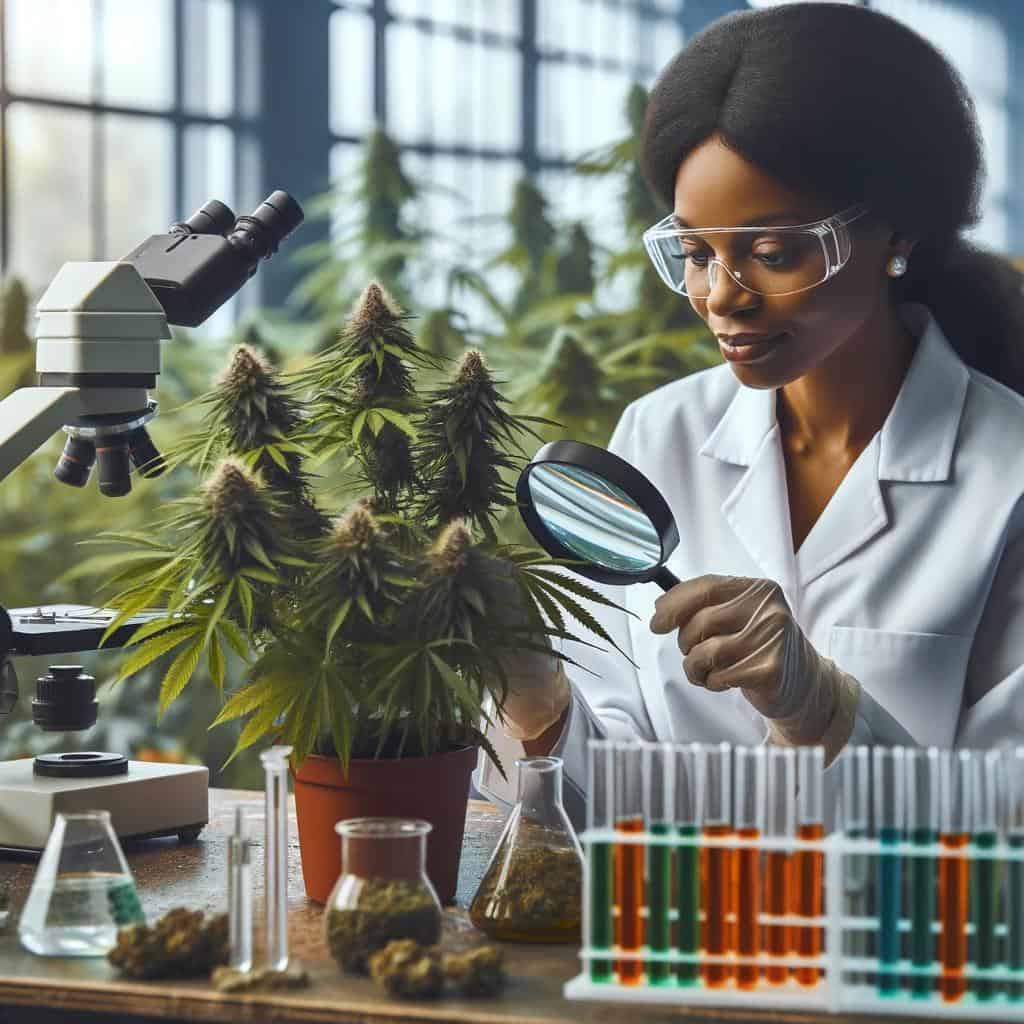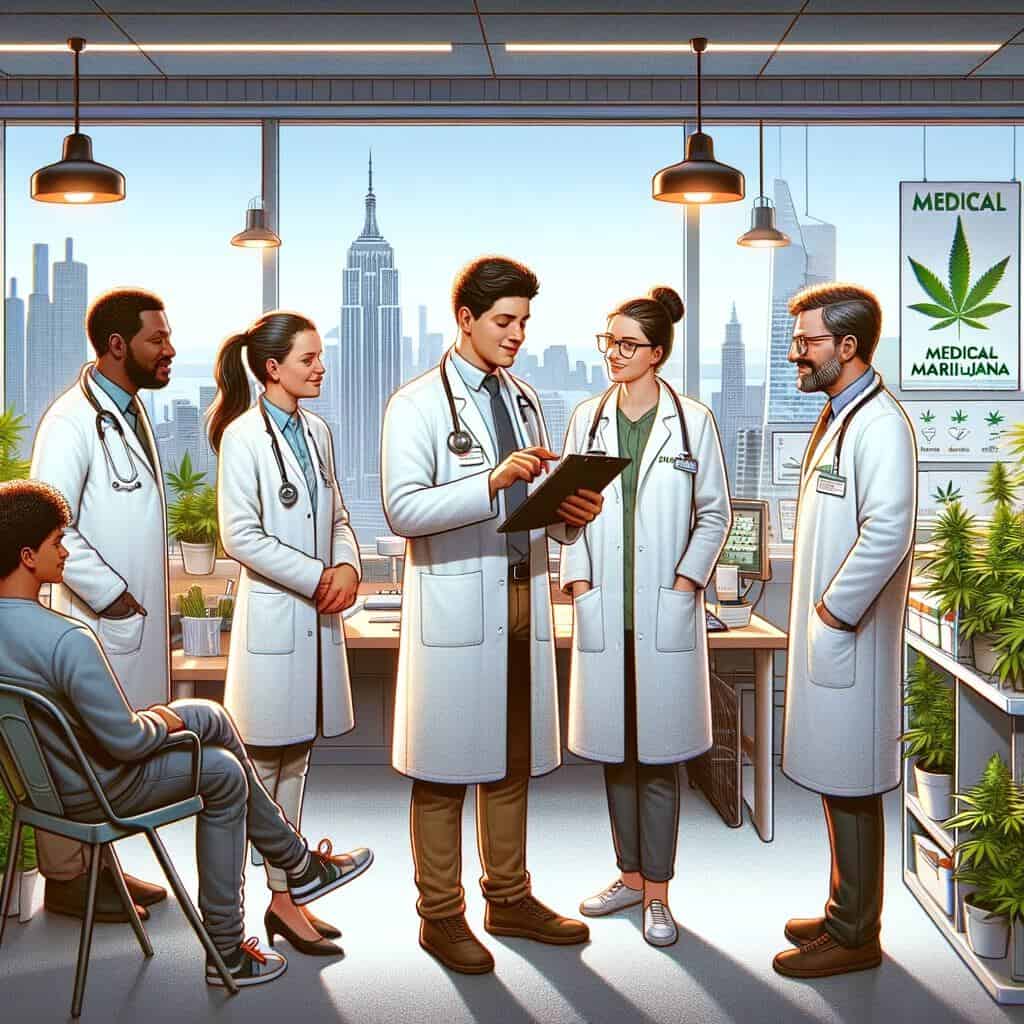- [email protected]
- (619) 304-4004
In New York, the Marijuana Regulation and Taxation Act revolutionizes medical marijuana cultivation, focusing on social justice, public health, and economic growth. This blog offers essential insights into legal, practical, and compliance aspects of home cultivation, guiding you through New York’s dynamic cannabis landscape.
Medical Marijuana in New York

In New York, the landscape of medical marijuana cultivation is evolving, offering new opportunities and challenges. The state’s Marijuana Regulation and Taxation Act has established a comprehensive framework to regulate the cultivation, distribution, and sale of medical and adult-use marijuana.
This act is a pioneering move in the nation, creating a regulated environment that emphasizes social justice, public health, and economic development. It actively encourages participation from communities historically impacted by prohibition policies, ensuring a diverse and equitable industry.
For those interested in home cultivation of medical marijuana in New York, understanding this regulatory framework is crucial. The state has implemented sophisticated quality assurance regulations, including standards for production, manufacturing, strict product testing, labeling, packaging, and advertising.
These measures are designed to ensure consumer safety and prevent targeting youth. Additionally, the state promotes economic development by encouraging small businesses and farmers to engage in the cannabis industry, offering various license types like microbusiness and cooperative licenses.
This blog delves into the Home Cultivation Guidelines for Medical Marijuana in New York, providing readers with essential information on legal considerations, best practices, and compliance requirements.
It’s a must-read for anyone looking to navigate the complexities of home cultivation in New York, ensuring they stay informed and compliant with the state’s evolving cannabis landscape.
Join us in exploring these guidelines and discover how you can be a part of this groundbreaking industry.
The laws regarding home cultivation of medical marijuana in New York have been established to provide clear guidelines for certified patients and their caregivers.
Here’s a summary of the key legal aspects:
These regulations are designed to ensure that home cultivation of medical marijuana is done safely, responsibly, and in compliance with state laws. It’s important for anyone considering home cultivation in New York to be fully aware of these laws and adhere to them strictly.
In New York, the eligibility for home cultivation of medical marijuana is specifically defined to ensure safety and compliance with state laws.
Here are the key criteria for eligibility:
It’s important for anyone considering home cultivation in New York to ensure they meet these eligibility requirements. Compliance with these criteria is crucial for legal and safe cultivation of medical marijuana.
Setting up a legal and effective home cultivation environment for medical marijuana in New York involves careful planning and adherence to state regulations.
Here are key steps to consider:
By following these guidelines, you can set up a home cultivation environment that is not only legal but also effective in producing quality medical marijuana, while ensuring safety and compliance with New York State regulations.

Growing medical marijuana at home requires attention to detail, adherence to legal guidelines, and a commitment to best practices to ensure a successful and compliant cultivation. Here are some key best practices for growing medical marijuana at home:
Remember, each grow is a learning experience. Patience and attention to detail are key to refining your cultivation skills and successfully growing medical marijuana at home.
When cultivating medical marijuana in New York, choosing the most suitable cultivation techniques is crucial for a successful harvest. The state’s climate, legal restrictions, and your specific medical needs play a significant role in determining the best approach.
Here are some cultivation techniques that are generally suitable for medical marijuana in New York:
Growing organically, using natural fertilizers and pest control methods, can be particularly beneficial for medical marijuana, ensuring a clean product free from harmful chemicals.
Techniques like LST involve gently bending and tying plants to control their shape and size. This can improve light exposure and air circulation, leading to better yields.
These methods involve growing many small plants in close proximity (SOG) or using a screen to guide plant growth (SCROG), optimizing space and light efficiency.
Especially for indoor grows, maintaining optimal temperature, humidity, and ventilation is crucial for plant health and yield.
Implementing integrated pest management (IPM) strategies that focus on prevention, monitoring, and using the least toxic control methods.
Regardless of the chosen technique, it’s essential to comply with New York’s legal guidelines for home cultivation, including plant count limits and security measures.
Each technique has its advantages and challenges, and the best choice often depends on your specific circumstances, including your living situation, available resources, and personal preferences.
Experimenting with different methods and continuously educating yourself on best practices can lead to successful and rewarding cultivation experiences.
Maximizing the quality and potency of home-grown medical marijuana involves a combination of careful strain selection, optimal growing conditions, and attentive plant care.
Here are some key strategies:
By following these practices, you can significantly enhance the quality and potency of your home-grown medical marijuana, ensuring it meets your therapeutic needs effectively.

Harvesting medical marijuana at the right time and using the correct method is crucial for ensuring optimal effectiveness, potency, and quality.
Here’s a guide on when and how to harvest your medical marijuana:
By carefully timing and executing your harvest, you can maximize the medicinal properties of your home-grown cannabis, ensuring it is as effective as possible for your needs.
Safely storing and using home-grown medical marijuana is essential to maintain its potency, prevent degradation, and ensure it is used effectively for medical purposes.
Here are some guidelines:
By following these storage and usage guidelines, patients can ensure that their home-grown medical marijuana remains effective, safe, and beneficial for their medical needs.
Home cultivating medical marijuana in New York involves several key legal considerations to ensure compliance with state laws and regulations.
Here are the most important aspects to keep in mind:
It’s crucial for anyone engaging in home cultivation of medical marijuana in New York to stay informed about the current laws and regulations, as they can change.
Compliance with these legal considerations is essential to ensure that cultivation activities are lawful and protected under state law.
In New York, the taxation of home-cultivated medical marijuana operates differently from commercially sold cannabis products.
Here are the key points regarding taxation in this context:
In context, while home-cultivated medical marijuana in New York is not subject to sales tax, it’s crucial for individuals to understand and comply with the legal framework surrounding the cultivation, use, and potential reimbursement processes associated with medical cannabis.
As always, consulting with a tax professional for personalized advice is recommended, especially if there are any complexities in individual circumstances.
Only certified patients and designated caregivers, who are 21 years or older and registered with the New York State Medical Marijuana Program, are legally permitted to cultivate medical marijuana at home.
A certified patient or caregiver can grow up to 3 mature and 3 immature cannabis plants at one time. Caregivers serving multiple patients can grow up to 6 mature and 6 immature plants, regardless of the number of patients, with a maximum of 4 patients.
You can grow medical marijuana within or on the grounds of your private residence, which includes houses, apartments, co-ops, and mobile homes. It must not be visible from public view and should be in a secure location.
No, selling or bartering home-grown medical marijuana is illegal in New York. The cultivation is strictly for personal medical use.
Excess or unwanted medical marijuana should be disposed of following the guidelines provided by the registered organization or licensee. It’s also permissible to give away, without compensation, a certain amount to another certified patient or caregiver.
You are free to choose any strain that meets your medical needs. However, it’s recommended to select strains based on their cannabinoid and terpene profiles that best address your specific health conditions.
If you choose to use pesticides, you must use only those approved for cannabis cultivation. It’s recommended to use organic and non-toxic pest control methods.
Your cultivation area should be locked and inaccessible to minors and unauthorized persons. It should also not be visible from public view to ensure privacy and security.
Yes, you can grow medical marijuana outdoors if it’s on your private property and not visible from public view. However, you must still comply with the plant count limits and secure the cultivation area.
Non-compliance with home cultivation guidelines can lead to legal repercussions, including potential fines, loss of your medical marijuana certification, and other legal penalties.
In conclusion, New York’s Home Cultivation Guidelines for Medical Marijuana mark a pivotal advancement for patients needing cannabis for medical reasons. These regulations ensure that eligible patients and designated caregivers, who must be over 21 and registered with the state’s Medical Marijuana Program, can legally grow medical marijuana at home.
The guidelines stipulate a maximum of 3 mature and 3 immature plants, emphasizing cultivation within a private, secure, and non-publicly visible space. Selling home-grown cannabis remains illegal, underscoring the program’s focus on personal medical use. Adherence to these guidelines is crucial for legal compliance, ensuring patient safety, and maintaining the integrity of home cultivation.
As the landscape of medical marijuana continues to evolve, staying informed about legal changes and best practices is essential for participants in New York’s program. This initiative significantly empowers patients, offering them more control over their medical treatment and access to cannabis.
https://cannabis.ny.gov/system/files/documents/2022/10/medical-home-cultivation-guide-.pdf
https://cannabis.ny.gov/system/files/documents/2022/09/medical-cannabis-home-cultivation-faqs.pdf

A1 Marijuana Doctors is an online platform, that connects marijuana patients to marijuana doctors in their state.

A1 Marijuana doctors is an online platform that connects medical patients to medical marijuana doctors. We offer a quick & easy way to apply for a medical marijuana card in all legal states.
Social Links
Contact Us
Quick Links
Trusted By




This website does not sell medicine nor controlled substances. It is a network of doctors & nurse practitioners, not a pharmacy / dispensary.
Copyright ©2023 A1 Marijuana Doctors. All rights reserved.